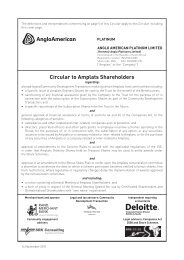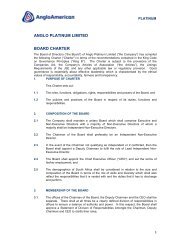Download PDF - Anglo American Platinum
Download PDF - Anglo American Platinum
Download PDF - Anglo American Platinum
You also want an ePaper? Increase the reach of your titles
YUMPU automatically turns print PDFs into web optimized ePapers that Google loves.
A.3 OVERVIEW OF KEY STRENGTHSAND WEAKNESSES IN THE GA PILARESETTLEMENT PROCESSThe review acknowledges that in the resettlement process at Ga Pila,the best practice resettlement outlined in today’s IFC PerformanceStandards were not in currency or as widely recognised or employedas they are now. In this way, the review is effectively assessing AP’sperformance against today’s standard, and one which did not existat the time. A review against these standards shows that the processfollowed at Ga Pila was broadly not aligned with the IFC standards.Overall, AP’s performance reflects a reactive approach, indicatinga lack of forward planning and of proactive risk management, aswell as a largely technical approach. There was a focus on the‘technical’ aspects of resettlement, but inadequate identificationand management of a wider set of non-physical and socio-culturalimpacts and risks. These weaknesses are discussed in Section 1.5and Section 1.6 respectively.This overview will outline the key findings of ERM’s review of theresettlement at Ga Pila. It will first highlight strengths – namelythose aspects of AP’s performance which show evidence ofalignment with the core tenets of an IFC compliant approach. It willthen identify and discuss the weaknesses of the process at Ga Pila.A.4 KEY STRENGTHSThe key strengths in AP’s approach are reflected in the fact thatalthough it was far from an example of best practice by today’sstandards, the Ga Pila process still had its foundations in some of thecore principles of the IFC standards. This was evidenced in that itsought to achieve, at least in basic form:• land acquisition by fair and legal means;• a degree of consultation and participation of affectedparties;• the provision of adequate replacement of property;• land based compensation and, associated with this, securityof tenure;• the provision of physical support with the actual move; and• the objective of seeking to improve living conditions.AP also recognised the need to undertake resettlement as astandalone process, separately resourced but integrated into thewider Project. These strengths are described further below.A.4.1Negotiated Settlement to Acquire LandRightsThe study shows that a negotiated approach to acquisition of landrights did take place, where negotiations were conducted withthe Kgoshigadi (chief ) who served as the custodian of customarycommunal land rights and was therefore, at least in terms of the lawand accepted traditional protocols of the time, the rights holder.There is some contestation, however, over the fairness of thenegotiated settlement, particularly in relation to the extent to whichcommunity members were adequately consulted and included inthe negotiations. This is addressed in Section A.5.1.A.4.2Consultation and Participation inDecision MakingAP ensured that the community set up a consultation structure (acommunity relocation committee) to represent its interests andmanage the relocation process on its behalf. This began as theRelocation Steering Committee (RSC) and was later establishedas the S21 Company and associate S21 Committee (S21). TheS21 gathered and gave responses to grievances raised by thecommunity. AP also ensured that it consulted the communityiteratively and at various key stages in the process, namely inthe selection of an appropriate host site and on the subject ofcompensation during the households audit and inventory of assets.There is some contestation, however, over the appropriateness andeffectiveness of these consultation efforts and of the consultationstructure itself. Issues have also been raised about what action APtook to remedy these problems when they arose. This is discussedfurther in Section A.6.1.A.4.3Inventory and Valuation of AssetsIn terms of IFC Performance Standard 5, AP appears to have met thebasic requirement to implement an audit of affected households.All affected structures were audited, including houses and somephysical assets. Communal land was also included in the audit,although its value was not measured on an individual or householdbasis.It should, however, be noted that concerns have been raised aboutboth the scope and communication process around the audit. Thereare claims that not all those affected fully understood the process.This issue is discussed in more detail later in Section A.5.2.A.4.4Physical Support During the MoveConsiderable effort was put into assisting the community withthe actual physical relocation. A reputable moving contractor wasiv



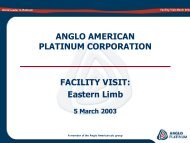
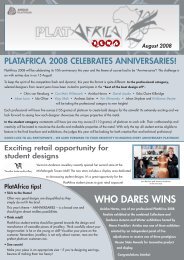
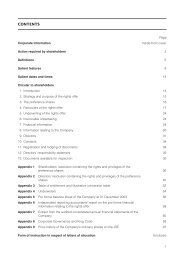

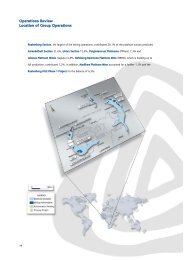


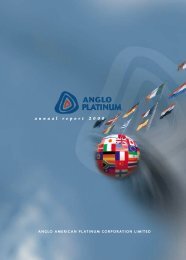
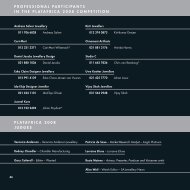
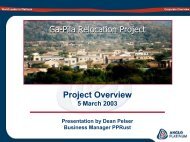
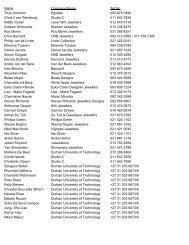
![[PDF] Mogalakwena Mine - Anglo Platinum](https://img.yumpu.com/43065142/1/184x260/pdf-mogalakwena-mine-anglo-platinum.jpg?quality=85)
